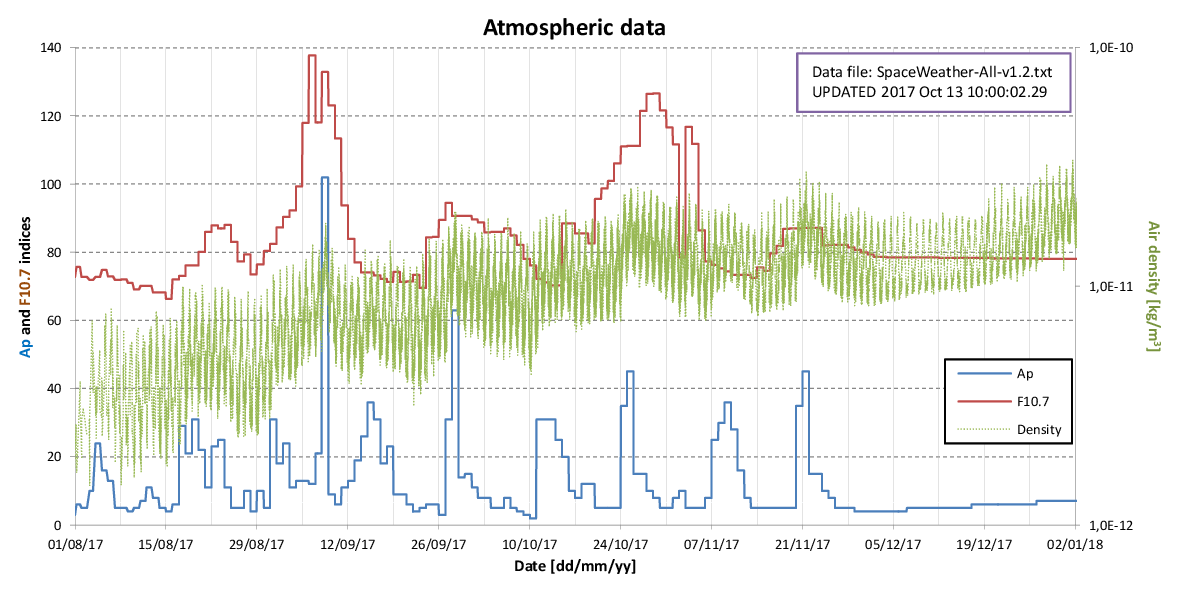I wrote a program to calculate the Tiangong 1 reentry date.
Starting from a TLE, my prog propagate the initial state down to an altitude of 20 km.
The simulation uses the NRLMSISE-00 atmospheric model considering the observed and predicted solar activity and geomagnetic levels.
As can be seen from the attached graph, while my calculations are in fairly good agreement with this site:
http://www.satflare.com/track.asp?q=37820#TOP
(“This object is expected to decay around Mon, 16/07/2018 06:20:00 +/- 84 hours UTC (these predictions are provided by Joseph Remis).”),
the reentry dates calculated by my program are well beyond the date calculated here:
http://www.aerospace.org/cords/reentry-predictions/tiangong-1-reentry/
(“Tiangong-1 is predicted to reenter in 2018 January ± 2 months.”).
I have 2 questions:
1) has anyone tried to simulate the Tiangong 1 reentry using Orbiter? (Since it’s almost impossible to predict the exact impact location, I’m only interested in the possible reentry date).
2) does anyone know another site where the reentry date is calculated?
Starting from a TLE, my prog propagate the initial state down to an altitude of 20 km.
The simulation uses the NRLMSISE-00 atmospheric model considering the observed and predicted solar activity and geomagnetic levels.
As can be seen from the attached graph, while my calculations are in fairly good agreement with this site:
http://www.satflare.com/track.asp?q=37820#TOP
(“This object is expected to decay around Mon, 16/07/2018 06:20:00 +/- 84 hours UTC (these predictions are provided by Joseph Remis).”),
the reentry dates calculated by my program are well beyond the date calculated here:
http://www.aerospace.org/cords/reentry-predictions/tiangong-1-reentry/
(“Tiangong-1 is predicted to reenter in 2018 January ± 2 months.”).
I have 2 questions:
1) has anyone tried to simulate the Tiangong 1 reentry using Orbiter? (Since it’s almost impossible to predict the exact impact location, I’m only interested in the possible reentry date).
2) does anyone know another site where the reentry date is calculated?




